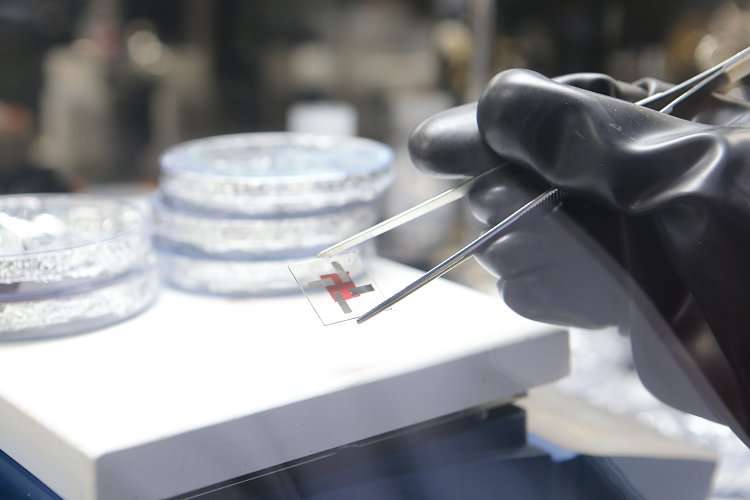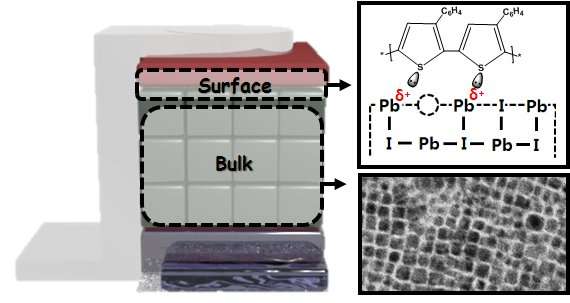New type of thin-film photodiode developed by DGIST research team. Credit: Daegu Gyeongbuk Institute of Science and Technology (DGIST)
A research team of at DGIST has unveiled a new high-performance photodiode that reduces thickness to one-sixth of conventional silicon photodiodes. According to the researchers, they worked to develop a technology to increase the stability and performance of photodiodes using cubic perovskite nanocrystals. Applying this technology to future photodiodes will contribute to the fields that require high accumulation and resolution.
Silicon photodiodes, the basic photoelectric conversion units of image sensors, are regarded as the mainstay for a variety of imaging applications because of their low noise, wide bandwidth absorption, and high operating frequency. Nonetheless, the silicon photodiodes currently in use in industry have limited resolution enhancement due to their thickness, exceeding 3 micrometers (μm). Perovskite, which is one of the main substitute materials, absorbs light well, but it was difficult to put it into practical use due to its low stability.
As a way to overcome the disadvantages of the existing materials, Professor Chung paid attention to the fact that cesium lead iodide (CsPbI3) perovskite maintains stability in the form of cubic nanocrystals. The research team has developed a new type of thin-film photodiode utilizing cubic cesium lead iodide perovskite nanocrystals and sulfur compounds between the electrodes of the photodiode. The photodiodes developed by the team have improved stability through acid-base reactions between plumbum ions (Pb2 +) and sulfur (S2-) anions.
Conceptual diagram of stabilized acid-base reaction and electron micrograph of cubic perovskite nanoparticles. Credit: Daegu Gyeongbuk Institute of Science and Technology (DGIST)
In this study, the optimized 0.5 micrometer thick thin-film photodiode demonstrated a sensitivity of 1.8×1012 Jones, similar to a silicon photodiode. In addition, it was stably operated for more than 10 hours even under the harsh conditions of relative humidity of over 80 percent.
The researchers suggested a method to improve the stability of various optical devices such as light emitting diodes and solar cells using perovskite as well as photodiodes. Furthermore, cesium lead iodide perovskite nanocrystals are expected to be used in various ubiquitous fields as they are able to be processed at low temperatures.
"The small and high-performance photodiodes developed by this research will be applicable to autonomous vehicles, military and space exploration fields that require high accumulation and resolution," said Professor Chung. "We will continue to lead the forth industrial revolution by developing low-cost, high-efficiency, and high-stability image sensors using perovskite photodiodes."
More information: Kyu Min Sim, Abhishek Swarnkar, Angshuman Nag, and Dae Sung Chung, "Phase Stabilized α-CsPbI3 Perovskite Nanocrystals for Photodiode Applications", Laser & Photonics Reviews, November 2017, onlinelibrary.wiley.com/doi/10 … /lpor.201700209/full , DOI: 10.1002/lpor.201700209
Provided by DGIST























